9130 A MAGNIFICENT AND MASSIVE PAIR OF RED LACQUER AND GILTWOOD SIDE CHAIRS Probably Venice. Signed With Initials T e H R And Dated 1711. Measurements: Height: 54 3/4″ (139m) Width: 37 1/2″ (95cm) Depth: 19 1/4″ (49cm)
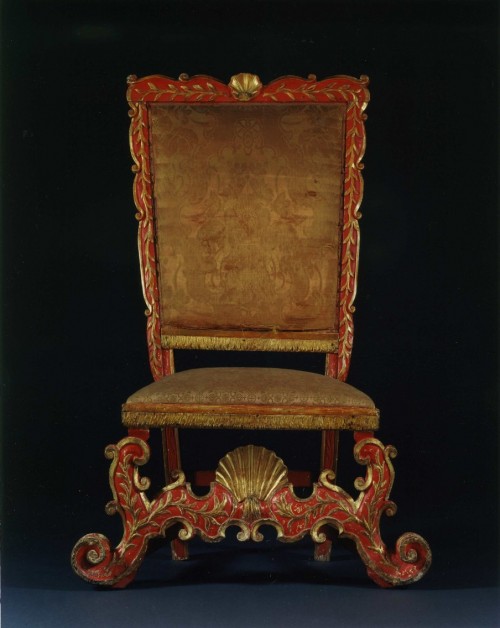
Research
Of red lacquer and parcel gilt. Each with a shaped top rail centred with a carved mollusc shell flanked by gilt foliate branches, the uprights similarly shaped, the upholstered back edged below with giltwood carved as a fringe, the upholstered seat above the gilt seat rail similarly carved as a fringe, the whole raised on four legs, the rear square backswept legs joined by a plain stretcher dated and initialled to the reverse, the scrolling parcel gilt front legs decorated with foliate branches and joined by a scrolling stretcher centred by a gilt mollusc shell.
The present chairs are bold and over-scale examples of the exuberantly carved and vividly coloured chairs being created in the early part of the eighteenth century to furnish the enchantingly sensuous palazzos of Venice, then “an enchanted city of carnivals, masques, amusement and pretence.”1 The presence to the reverse of the chairs of a date and signature is extremely rare on an early eighteenth century piece of Italian furniture and dates them precisely to 1711.
The chairs are an example of the modified form in which the high-backed chair of the renaissance persisted into the eighteenth century, ranged with cabinets and tables against the walls of the grand formal rooms of Italian palazzos. Throughout Italy the predominantly rectilinear form of these chairs was given more exuberant expression through the ornate carving, gilding and the application of often vivid colour seen in the present chairs.
The unusual survival of a design for a chair in the Fondazione Fantoni, Rovetta (figure 1), illustrates the elaborate form that such chairs attained in Italy.2 That piece is closely related to the present chairs with a high, spreading back, sloping away from the seat, the rail of which is decorated with carved tassels, a most unusual feature shared by both chairs. The legs of the design, like those of the present chairs, are largely plain to the reverse but to the front are carved with boldly scrolling out-swept feet, joined by a similarly crafted stretcher centred by a shell motif carving.
The overall form of chair seen in that design and realised in the present chairs was especially characteristic of Venetian craftsmen. A Venetian chair now in Milan among the collection of Beniamino Fontano (figure 2), provides an even closer parallel to the current examples, without the arms of the Rovetta design and with a boldly scrolling stretcher to the front centred by a mollusc shell.3
In Venice, these elaborately carved elements could reach further extremes of extravagance. A chair in the Victoria and Albert Museum (figure 3) excels in the profusion of its scrolling carving, both on the dramatically curving arms and in the foliate scrolls of the front legs and central stretcher.4
Such elaborately executed chairs with carved elements profusely employed in their design reached their most extravagant expression in the period 1660-70. By the beginning of the eighteenth century heavier forms were beginning to give way to the lighter and more graceful lines seen in the present chairs.
Increasingly, these chairs were highly decorated objects made colourful with the addition of paints or gilding, in the use of which Italian craftsmen excelled. The taste for gilded furniture, begun in the last decades of the seventeenth century, reached its highest expression in Italy, whilst it was particularly in Venice, with the use of what the furniture historian William M. Odom terms “exquisite harmonies” of colour, that the art of furniture painting was most completely mastered and beautifully employed.5
Footnotes:
1 William M. Odom, A History of Italian Furniture, Volume II, New York: Doubleday, Page & Company (1919), p.102.
2 Enrico Colle, Il Mobile Barocco in Italia, Arredi E Decorazioni D’Interni Dal 1600 Al 1738, Milano: Electa (2000), p. 388
3 Saul Levy, Il Mobile Veneziano Del Settecento, Volume I, De Agostini (1996), p. 80
4 William M. Odom, op. cit., p. 64, Fig. 82.
5 ibid., pp. 159-162, p. 189, p. 204.

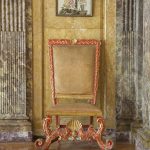
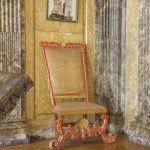


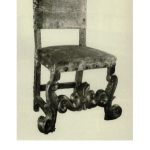
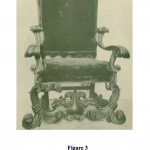
Comments are closed.